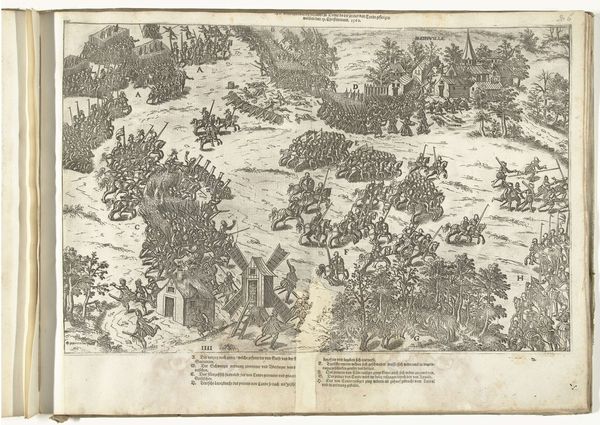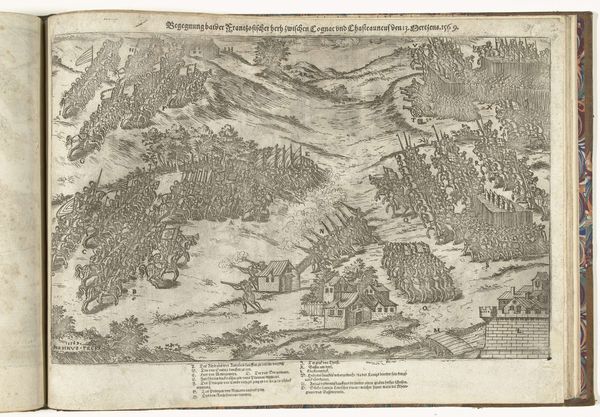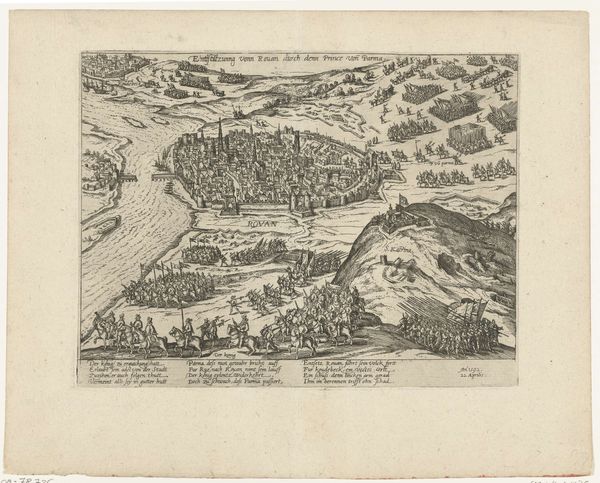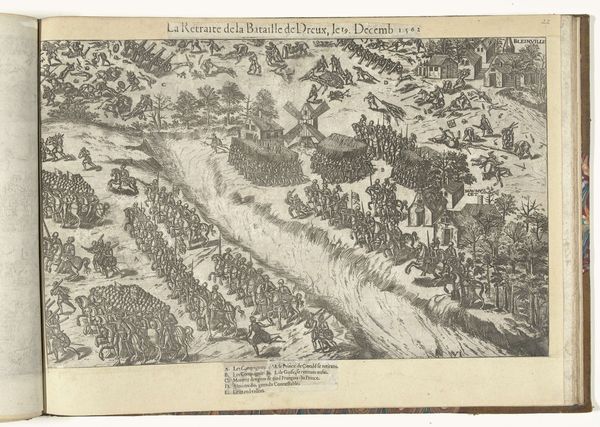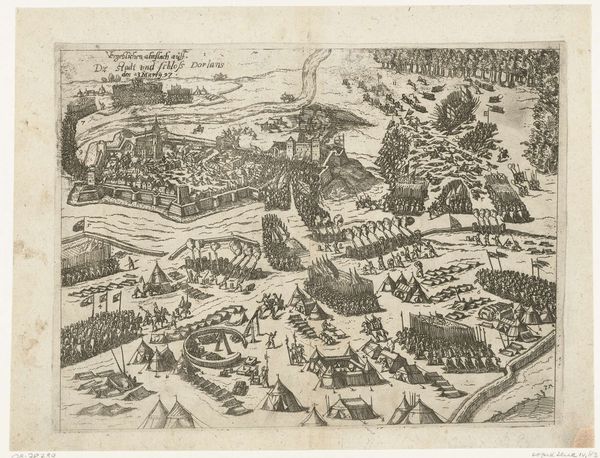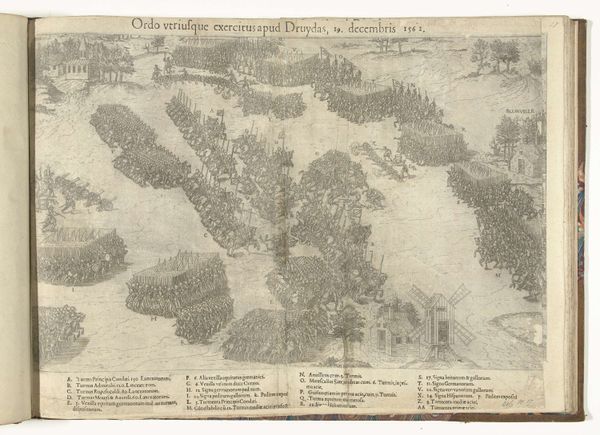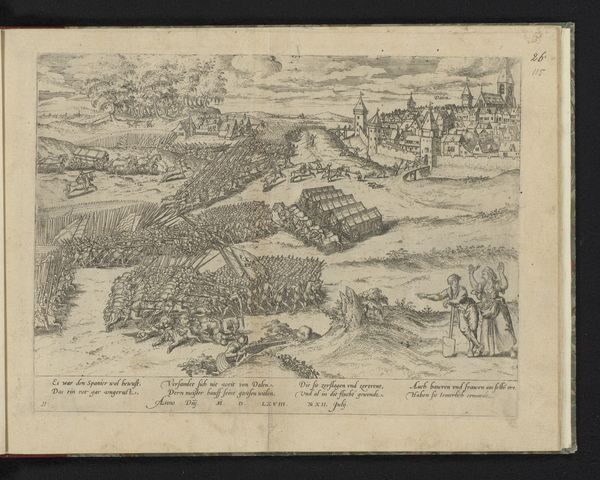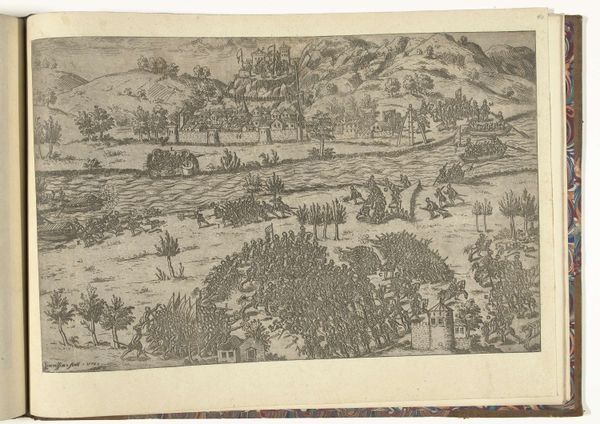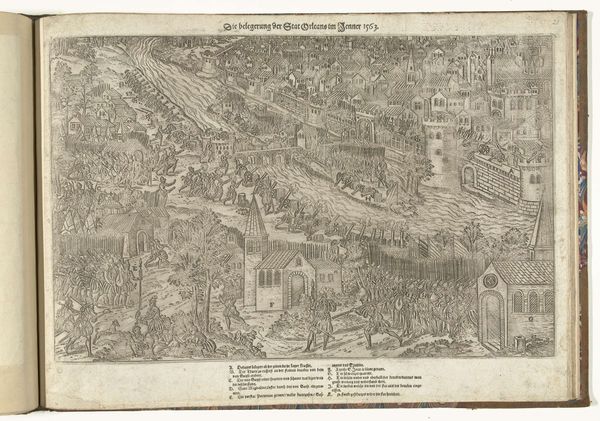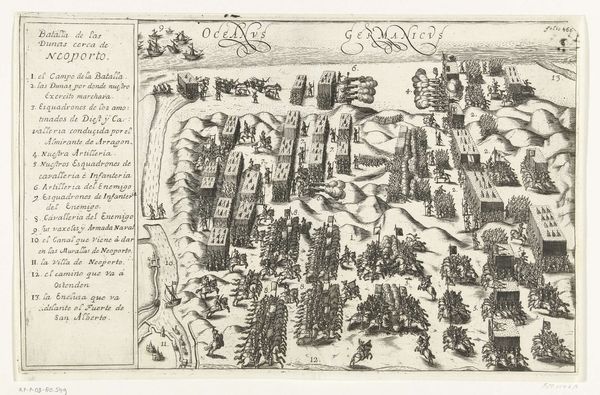
print, engraving
#
medieval
# print
#
old engraving style
#
landscape
#
genre-painting
#
history-painting
#
engraving
Dimensions: height 361 mm, width 483 mm
Copyright: Rijks Museum: Open Domain
Curator: Standing before us, we have a print titled "Slag bij Dreux, tweede treffen, 1562," or "Battle of Dreux, Second Encounter, 1562," created around 1570 by Jean Perrissin. It's an engraving, depicting a tumultuous historical scene. Editor: Chaos! That’s the first word that springs to mind. It's like looking at a swarm of agitated bees, except the bees are little figures brandishing weapons. The level of detail is overwhelming. Curator: Indeed, the engraving exemplifies the meticulousness common in depictions of battle scenes from this era. Observe how Perrissin utilizes a bird's-eye view to map out the various factions and movements across the landscape. This panoramic perspective offers a structured, almost strategic comprehension of the battle's unfolding. Editor: Structured chaos, I’d call it. Even with all that meticulous detail, I’m still getting a sense of the sheer, overwhelming, bewildering…*experience* of war. See how everything seems to be churning into everything else? Curator: Precisely. The medium of engraving lends itself to intricate line work, effectively rendering the density of troops and the textured landscape. Note the sophisticated deployment of line weights to convey depth. The darker, more intensely engraved areas suggest closer proximity, while lighter areas recede into the distance. Editor: It almost feels like looking at an extremely elaborate maze. Or maybe like trying to untangle a lifetime’s worth of fishing line! So much anxiety wrapped up in one flat piece of paper! I am impressed at the energy rendered in a medium you'd associate with stillness. Curator: It encapsulates both the factual record and an emotional reading of the conflict, as engravings like these played an important role in shaping the public understanding of significant historical events. The linear composition lends it a narrative structure; each visual element becomes part of a larger historical statement. Editor: It gives me shivers. It makes you realize history isn't just names and dates—but uncountable moments of extreme human experiences crashing against each other. The engraving style almost mummifies those moments into forever, which might be part of the intention all along. Curator: Yes, that distillation is quite profound. Considering Perrissin's artistic approach, it becomes clear that the aim isn't merely representational; but also to impart a sense of the magnitude and gravity of the battle. Editor: Magnitude is definitely felt! Curator: Ultimately, the lasting value of "Battle of Dreux" rests on its clever fusion of historical accuracy and artistic expressiveness, capturing the many facets of human confrontation. Editor: Exactly—art making sense of something humans find endlessly difficult to reconcile, a talent well worth further discovery, don't you think?
Comments
No comments
Be the first to comment and join the conversation on the ultimate creative platform.
